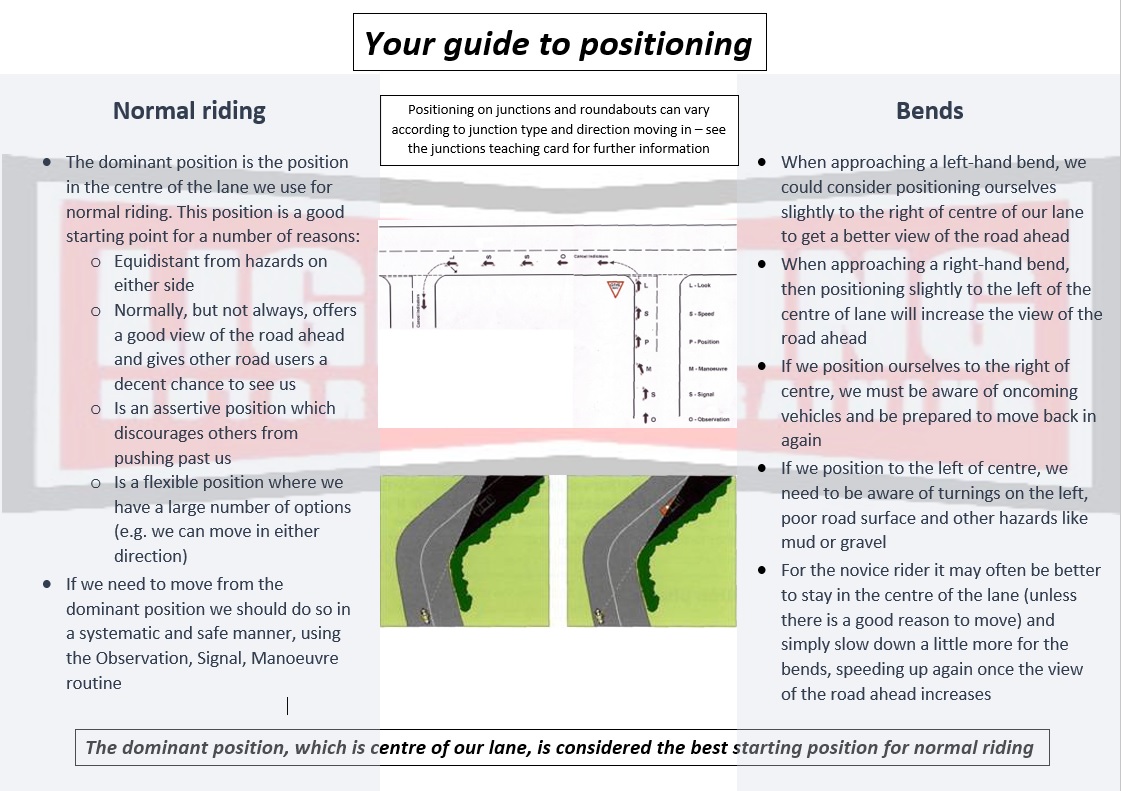Positioning

Your guide to correct Positioning
Riding in the correct position confers numerous benefits; it helps you be seen by other road users, it helps you stay away from hazards and it provides the correct information for other road users to assess your intentions.
The first principal is that we need to be flexible in how we approach the correct position. There are three main positions, referred to as One (close to the curb), Two (in the centre of our lane) and Three (close to the centre white line). Examples of differing positions are as follows:
- Position One: suitable for turning left from a minor to a major road, for dealing with on coming vehicles in side streets, and for an improved view around a right hand bend.
- Position Two: our normal riding position for straight roads, for riding on motorways and dual carriageways, and for approaching a crossroads.
- Position Three: this is appropriate for passing parked cars, cyclists, and pedestrians on the road, for getting an improved view round a left hand bend, and for turning right at any junction.
In the case of Position Three this can be as extreme as crossing onto the other side of the road. A good example would be allowing at least a car door’s width for a parked car – this may take you over the centre white lines. If there are oncoming vehicles you may have to wait or significantly reduce your speed.
Ask yourself – does my position match my indicator? Poor positioning is nearly always caused by excessive speed.
